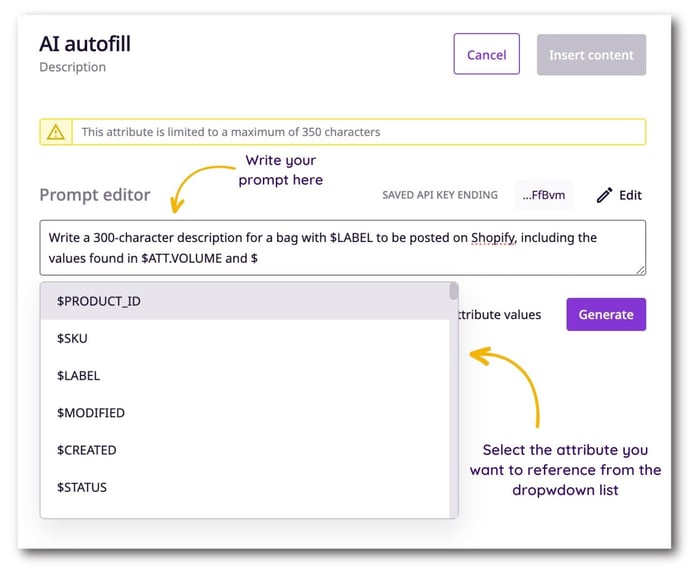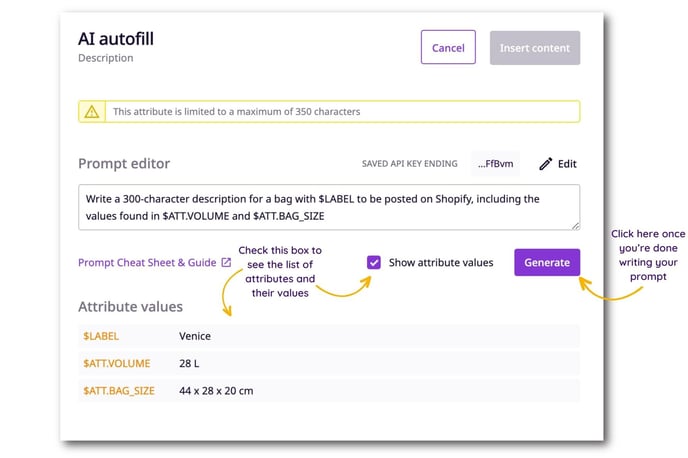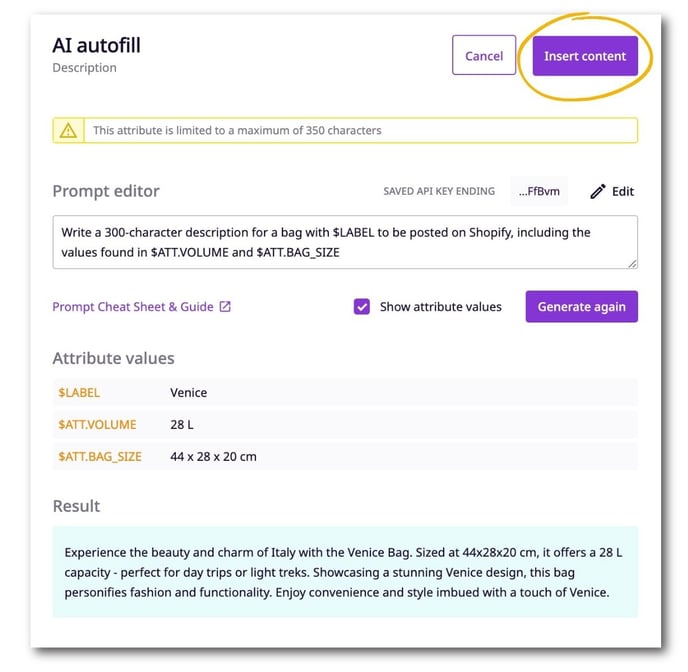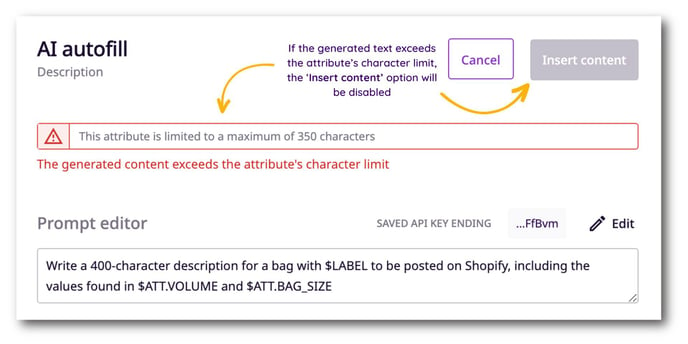How to use Artificial Intelligence in Plytix to optimize and enrich your short text and paragraph data
The AI Autofill feature lets you generate and optimize content for individual products in the Product Detail page. This article will go over how to use AI to edit content with some best practices to make the most out of this tool.
ℹ️ This feature is not available in all accounts yet. If you're interested in gaining access to AI in Plytix, please contact your Account Manager.
Adding your AI generated text in your attribute values
Best practices for using AI in Plytix
*Skip to any section in this article by clicking on the links above
Auto-generating text using AI
This article is about using AI to edit text attributes for individual products in the Product Detail page. To edit products in bulk with AI, check out this other guide to learn more.
In the Product Detail page:
- Click on a text attribute.
- Select the magic wand button to open the AI edit panel. A panel will open with a "Prompt editor" where you can start writing your prompts for the AI text generator. These are text instructions written in natural language. They can vary in length and complexity from simple operations to advanced equations. Please refer to our cheat sheet.
To generate text using AI Autofill, write out your prompt in the prompt editor. If you wish to reference an attribute, type “$” and select your attribute from the dropdown list. You can reference as many attributes as you want in your prompts.

ℹ️ When referencing attributes in the prompts, make sure there is a space between any punctuation you insert both before and after $(ATTRIBUTE). Otherwise, the referenced attribute will not be recognized in the prompt.
- Check the box 'Show attribute values' to view a list of attributes you referenced in your prompt with the values they contain for the product you are entering.
- Once you finish writing your prompt, press 'Generate' and wait for the AI editor to generate your text.

ℹ️ When referencing an attribute in your prompt, AI Autofill will refer to the value of the referenced attribute, rather than the name of the attribute. For example, when referencing $ATT.VOLUME, AI Autofill recognizes that $ATT.VOLUME is 28 L in your final prompt.
Adding your AI generated text in your attribute values
1. If you are happy with the OpenAI result, select 'Insert content.' This will overwrite the previous attribute value with the AI-generated text.

⚠️ Once you select “Insert content,” the AI Autofill side panel will close and will delete your prompt and result, so you will only be able to find the generated text directly in your attribute value. Selecting "Insert content" will also overwrite whatever value the attribute had before. If you wish to recover the value before it was overwritten, select “Discard changes.”
If you have a character limitation on your attribute (e.g. maximum 350 characters), and the AI generated text exceeds this limit, AI Autofill won’t be able to insert it into your attribute. Instead, it will display an error message (see image below). To counteract this, add a new instruction to your prompt telling AI to limit the response to your specific character limit number (e.g.: “limit your response to 230 characters”).

2. Select 'Save changes'

If you wish to continue editing the AI-generated text, you can do so only after it's already inserted in your attribute value. After inserting the text, you can edit it by clicking on the pencil icon.
Best practices for using AI in Plytix
If you are unsure of how to get started with AI Autofill, check out these prompt examples.
Keep the following tips in mind to come up with a good prompt structure for the content you need to generate:
- Be specific: consider the desired tone of voice you want your AI-generated text to have (e.g.: witty, formal, brief), the character limit, and more! The more detailed your prompt is, the better your result will be.
- Consider who your audience is, and include your target demographic in your prompt.
- Refer to the platform or channel where this content will be used; whether it will be displayed in your company’s e-catalogue, your Shopify store, or your social media, the language and formatting of each platform varies — and you can let AI take care of it!
What's next?
- Learn how to use different attribute types
- Learn how to create and manage attribute groups
- Learn how to create, edit, and test formulas for attribute transformations